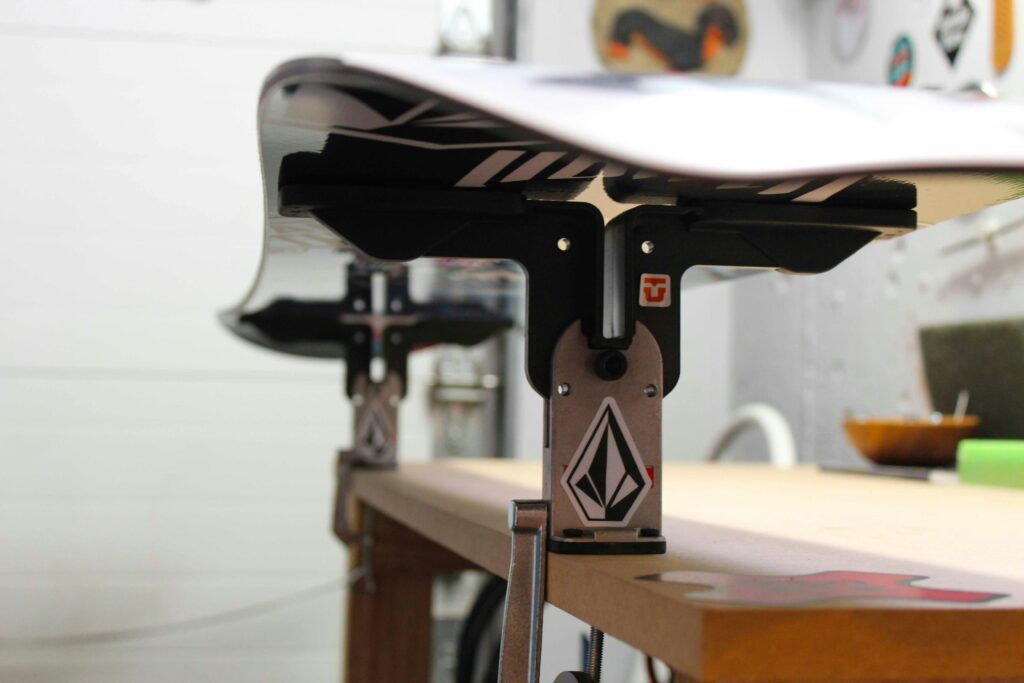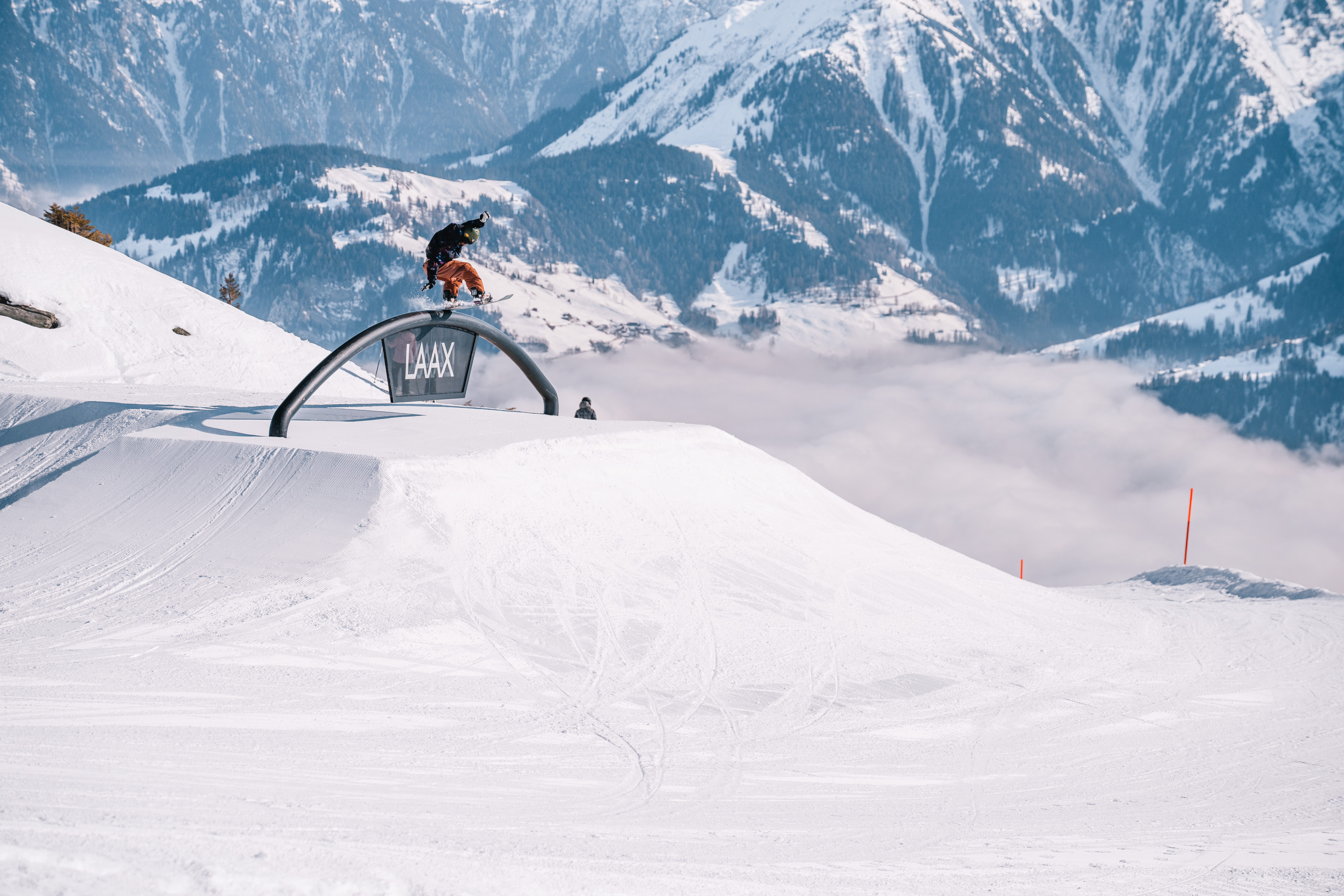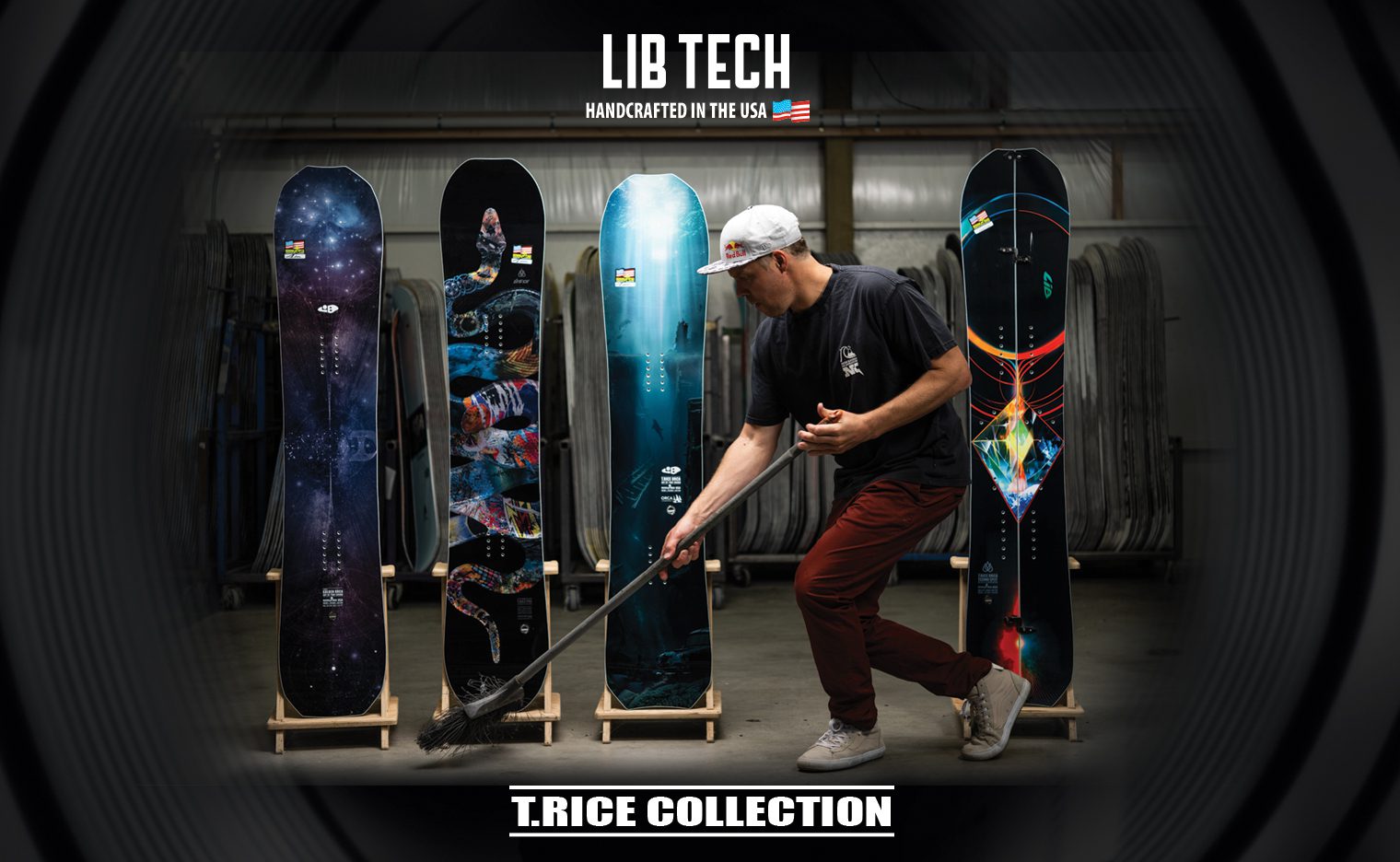
Gear Chat: Ben Ferguson on his Custom Limited Edition
Ben Ferguson just turned 30, and the legendary Burton Custom is also

From Shape to Sidecut: The Easy-to-Understand Snowboard Tech Guide

Snowboard gear reviews can feel like a foreign language: triax fiberglass, sintered base, 3BT, progressive sidecut… However, the truth is none of it matters unless you know what it means and how it actually changes your ride.
That’s why this is your translator. Below, we break down every snowboard design element — shapes, profiles, sidecuts, cores, bases, and the brand-specific stuff — so you can read specs like a pro. As a result, you’ll be able to match them to your style and choose the board, boots, and bindings that will make your season unforgettable.
Your board’s shape is the blueprint — it sets the tone for how it rides before you even strap in. Because shape influences handling so strongly, it’s the first choice you should make.
A snowboard shape with a centred stance and identical nose/tail for equal performance regular or switch — ideal for park and freestyle riders.
Looks like a twin but rides slightly better in one direction — therefore it’s a go-to for all-mountain riders who still spend time riding switch.
Built to ride forward with confidence, offering more stability and float in one direction — making it ideal for freeride and carving.
Powder specialist shapes with a wider nose and narrower tail — as a result, you get effortless float and smooth turns in deep snow.
The profile changes how your board grips, pops, and floats. In fact, it’s one of the biggest factors in how your board feels underfoot.
The classic profile — powerful, poppy, and precise for riders who want stability and control at speed or in the park.
Great choice for beginner snowboarders learning turns, and advanced riders who want effortless float on deep powder days.
Offers the power and precision of camber with added forgiveness and float from rocker — therefore, it’s the most versatile modern profile.
Perfect for predictable, stable riding — in addition, it’s easy to press in the park and forgiving for progressing riders.
Shaped like a snowboard with training wheels for edge catches — flat where you need stability, lifted where you want forgiveness.
The Goldilocks profile — not too aggressive, not too loose, a balanced ride for most conditions.
Think of it as a built-in surfboard fin — taper helps the nose float and the tail sink for smooth powder turns.
Your board’s invisible steering wheel — the tighter the curve, the quicker the turn.
Under the graphics, every board is a carefully engineered sandwich.
Pro Tip: Choose for your most frequent terrain, not your dream trip.

Ben Ferguson just turned 30, and the legendary Burton Custom is also

On a stage defined by progression and innovation, Volcom proudly unveils the

The New and Updated Travis Rice Dream Snowboard Collection is Live! Travis
Sign up for the very best in snowboard culture, get notified of prize drops, and receive our weekly essential news hit: The Friday Dump.
| Cookie | Duration | Description |
|---|---|---|
| cookielawinfo-checkbox-advertisement | 1 year | The cookie is set by GDPR cookie consent to record the user consent for the cookies in the category "Advertisement". |
| cookielawinfo-checkbox-analytics | 11 months | This cookie is set by GDPR Cookie Consent plugin. The cookie is used to store the user consent for the cookies in the category "Analytics". |
| cookielawinfo-checkbox-functional | 11 months | The cookie is set by GDPR cookie consent to record the user consent for the cookies in the category "Functional". |
| cookielawinfo-checkbox-necessary | 11 months | This cookie is set by GDPR Cookie Consent plugin. The cookies is used to store the user consent for the cookies in the category "Necessary". |
| cookielawinfo-checkbox-others | 11 months | This cookie is set by GDPR Cookie Consent plugin. The cookie is used to store the user consent for the cookies in the category "Other. |
| cookielawinfo-checkbox-performance | 11 months | This cookie is set by GDPR Cookie Consent plugin. The cookie is used to store the user consent for the cookies in the category "Performance". |
| viewed_cookie_policy | 11 months | The cookie is set by the GDPR Cookie Consent plugin and is used to store whether or not user has consented to the use of cookies. It does not store any personal data. |
| Cookie | Duration | Description |
|---|---|---|
| _ga | 2 years | This cookie is installed by Google Analytics. The cookie is used to calculate visitor, session, campaign data and keep track of site usage for the site's analytics report. The cookies store information anonymously and assign a randomly generated number to identify unique visitors. |
| _gat_gtag_UA_189035576_1 | 1 minute | This cookie is set by Google and is used to distinguish users. |
| _gid | 1 day | This cookie is installed by Google Analytics. The cookie is used to store information of how visitors use a website and helps in creating an analytics report of how the website is doing. The data collected including the number visitors, the source where they have come from, and the pages visted in an anonymous form. |
| CONSENT | 16 years 4 months 12 hours | These cookies are set via embedded youtube-videos. They register anonymous statistical data on for example how many times the video is displayed and what settings are used for playback.No sensitive data is collected unless you log in to your google account, in that case your choices are linked with your account, for example if you click “like” on a video. |
| Cookie | Duration | Description |
|---|---|---|
| IDE | 1 year 24 days | Used by Google DoubleClick and stores information about how the user uses the website and any other advertisement before visiting the website. This is used to present users with ads that are relevant to them according to the user profile. |
| test_cookie | 15 minutes | This cookie is set by doubleclick.net. The purpose of the cookie is to determine if the user's browser supports cookies. |
| VISITOR_INFO1_LIVE | 5 months 27 days | This cookie is set by Youtube. Used to track the information of the embedded YouTube videos on a website. |
| YSC | session | This cookies is set by Youtube and is used to track the views of embedded videos. |
| yt-remote-connected-devices | never | These cookies are set via embedded youtube-videos. |
| yt-remote-device-id | never | These cookies are set via embedded youtube-videos. |
| Cookie | Duration | Description |
|---|---|---|
| _pk_id.43969.7c7f | 1 year 27 days | No description |
| _pk_ses.43969.7c7f | 30 minutes | No description |